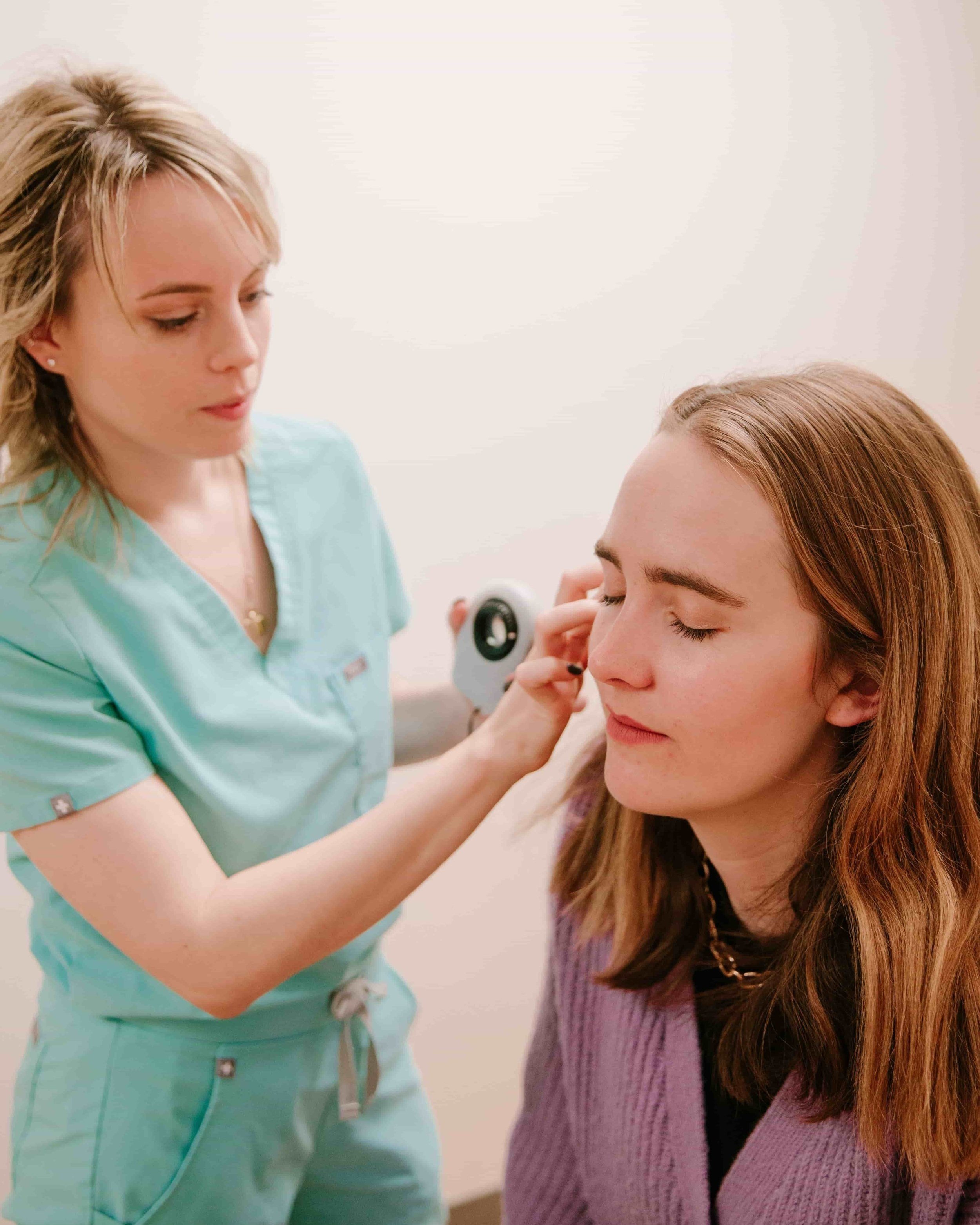May is Skin Cancer Awareness Month.
With more than 5 million cases of skin cancer diagnosed each year in the US, skin cancer is the most common cancer in the country. Fortunately, it’s also one of the easiest cancers to prevent. By understanding what causes skin cancer and how to spot it in its early form, you can avoid skin cancer in yourself and your loved ones.
This blog will discuss the causes and signs of skin cancer and what you need to keep yourself safe.
Let’s dive in.
What is Skin Cancer?
Skin cancer is the growth of abnormal cells in the epidermis (skin). The growth is usually caused by unrepaired DNA damage that results in epidermal mutations. These mutations cause the skin cells to multiply rapidly, forming malignant tumors that can spread and grow quickly if not caught and treated quickly.
There are many different types of skin cancer, including basal cell carcinoma, squamous cell carcinoma, melanoma, and Merkel cell carcinoma.
What Causes Skin Cancer?
The two primary causes of skin cancer are the sun’s UV rays and the use of UV tanning beds. UV rays cause damage to the epidermal cells and lead to malignant growths.
Your risk for melanoma doubles if you’ve had more than five sunburns in your life. Currently, experts estimate that 1 in 5 Americans will develop skin cancer by 70.
Fortunately, if skin cancer is caught early, it can be treated with Mohs Surgery successfully. This creates minimal scarring and offers high odds of eliminating the cancer.
How to Spot Skin Cancer
According to the Skin Cancer Foundation, there are three primary things to look for when you’re checking for skin cancer:
New growths. Keep a close eye on any new moles or blemishes that appear, especially if you’re over 21.
Changing spots. Moles or growths that change in size, shape, color, or texture could be cancerous or precancerous.
Irregular outlines. Look for spots with an unusual or irregular shape or that hurt, crust, itch, or bleed for more than three weeks.
If you notice any moles, growths, or marks that meet the above criteria, see your dermatologist immediately.
How to do a Self-Exam: Your Step-by-Step Guide
Now that you know what skin cancer looks like, let's talk about how to spot it.
Here’s a step-by-step guide, from the Skin Cancer Foundation, for checking your skin:
1. Start with the face
Using a bright light and a mirror, check your face. Pay special attention to the ears, nose, lips, and mouth. Use an additional hand mirror to check the back of your ears and your neck.
2. Inspect your scalp
Using a blow-dryer set to a low-temperature setting, thoroughly check the skin on your scalp. If you need help, ask someone to help you part your hair.
3. Check your hands and arms
Pay special attention to the palms and backs of your hand. Check under the fingernails and between the fingers. Examine the wrists and the front and back of the forearms. Stand in front of a full-length mirror and, beginning at the elbows, scan the sides of your upper arms and your underarms.
4. Inspect your torso
Using a full-length mirror, focus on inspecting your neck, chest, and torso. Women should lift their breasts and check the skin on the underside.
5. Scan your upper back
Next, use a hand mirror to inspect the back of your neck, shoulders, and upper back. You can also check any part of your upper arms that you couldn’t view in step 4.
6. Scan your lower back
Using a hand mirror and a full-length mirror, scan your buttocks, lower back, and the backs of both legs.
7. Inspect your legs
Finally, sit down in a chair and prop each leg in turn on a piece of furniture. Use a hand mirror to examine the undersides of your legs, the genital area, and the front and side of both legs.
Be sure to check the ankles, shins, and the tops of the feet and the space under the toenails and between the toes.
If you notice any unusual growths during this process, get it checked out by your dermatologist right away.
How to Prevent Skin Cancer
Want to reduce your risk of skin cancer? Follow these tips:
Be safe about the sun
The sun is one of the primary causes of skin cancer. That’s why dermatologists stress taking sun precautions and wearing sunscreen daily. Here are a few ways to protect yourself:
Stay in the shade and avoid sun exposure during the hottest part of the day.
Wear long, UV-blocking clothing that covers your arms and legs.
Wear a hat with a wide enough brim to shade the head, neck, ears, and face.
Wear sunglasses that block UVB and UVA rays.
Wear a broad-spectrum sunscreen with SPF 15 or higher, even on cloudy days.
Stay out of tanning beds
Indoor tanning exposes the skin to incredibly concentrated levels of UV rays. Over time, exposure to these rays can cause cataracts and skin cancers. What’s more, tanning beds can be dangerous! Indoor tanning accidents lead to 3,000 emergency room visits each year - mostly for burns.
The bottom line? Keep your skin safe – stay out of the tanning bed.
See your dermatologist regularly
Finally, have your skin checked regularly. Even if you’re careful about UV exposure, skin cancer can still occur. In some cases, skin cancers are hereditary, and you may have an increased risk of developing the disease if your parents or grandparents had it.
We recommend seeing a dermatologist for a skin cancer screening at least once a year or more often if you’re at high risk for skin cancer.
Our Team is Your Partner in Beautiful, Healthy Skin
Getting checked regularly for skin cancer is an essential part of skincare. Fortunately, our team is here to help. We provide comprehensive skin cancer screening options to help you stay on top of your skincare and spot potential skin cancer early.
Want to schedule a skin cancer screening? Contact our Kalispell, MT team, to get on the books and take care of your skin this month.




